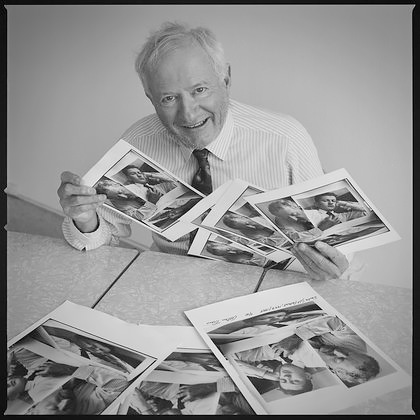Arthur Tress (born November 24, 1940) is an American photographer. He is known for his staged surrealism and exposition of the human body.
Tress was born in Brooklyn, New York. The youngest of four children in a divorced family, Tress spent time in his early life with both his father, who remarried and lived in an upper-class neighborhood, and his mother, who remained single after the divorce and whose life was not nearly so luxurious. At age 12 he began to photograph circus freaks and dilapidated buildings around Coney Island in New York City, where he grew up.
Tress studied at Abraham Lincoln High School in Coney Island, and gained a Bachelor of Fine Arts at Bard College in Annandale-on-Hudson, New York. After graduating from Bard College in 1962, Tress moved to Paris, France to attend film school. While living in France, he traveled to Japan, Africa, Mexico, and throughout Europe. He observed many secluded tribes and cultures and was fascinated by the roles played by the shaman of the different groups of people. The cultures to which he was introduced would play a role in his later work. Tress spent the spring and summer of 1964 in San Francisco, documenting the Republican Convention that nominated Barry Goldwater, civil rights demonstrations at segregated car dealerships on Van Ness Avenue, and the Beatles launching their 1964 tour. Tress took over 900 photographs that were put away and re-discovered in 2009, and featured in a show at San Francisco's deYoung Museum.
He currently resides in San Francisco, California.
Source: Wikipedia
Arthur Tress began his first camera work as a teenager in the surreal neighborhood of Coney Island where he spent hours exploring the decaying amusement parks. Later, during five years of world travel, mostly in Asia and Africa, he developed an interest in ethnographical photography that eventually led him to his first professional assignment as a U.S. government photographer recording the endangered folk cultures of Appalachia. Seeing the destructive results of corporate resource extraction, Tress began to use his camera to raise environmental awareness about the economic and human costs of pollution. Focusing on New York City, he began to photograph the neglected fringes of the urban waterfront with a straight documentary approach. This gradually evolved into a more personal mode of “magic realism” combining improvised elements of actual life with stage fantasy that became his hallmark style of directorial fabrication. In the late 1960s Tress was inspired to do a series based upon children's dreams that combined his interests in ritual ceremony, Jungian archetypes, and social allegory. Later bodies of work dealing with the hidden dramas of adult relationships and the reenactments of male homosexual desire evolved from this primarily theatrical approach.
Beginning in the early 1980s, Tress began shooting in color, creating room-sized painted sculptural installations out of found medical equipment in an abandoned hospital on New York's Welfare Island. This led to a smaller scale exploration of narrative still life within a children's toy theater and a portable nineteenth-century aquarium.
Around 2002, Tress returned to gelatin silver, exploring more formalist themes in the style of mid- century modernism, often combining a spontaneous shooting style with a constructivist's sense of architectural composition and abstract shape. In addition to images of California skateboard parks, his recent work includes the round images of the series Planets and the diamond-shaped images of Pointers.
Source: www.arthurtress.com
